 Murder at the White Palace (Sparks & Bainbridge, #6) by Allison Montclair
Murder at the White Palace (Sparks & Bainbridge, #6) by Allison Montclair Format: eARC
Source: supplied by publisher via Edelweiss
Formats available: hardcover, ebook, audiobook
Genres: historical fiction, historical mystery
Series: Sparks & Bainbridge #6
Pages: 320
Published by Minotaur Books on July 30, 2024
Purchasing Info: Author's Website, Publisher's Website, Amazon, Barnes & Noble, Kobo, Bookshop.org, Better World Books
Goodreads
In post-WWII London, the matchmakers of The Right Sort Marriage Bureau are involved in yet another murder.In the immediate post-war days of London, two unlikely partners have undertaken an even more unlikely, if necessary, business venture—The Right Sort Marriage Bureau. The two partners are Miss Iris Sparks, a woman with a dangerous—and never discussed—past in British intelligence and Mrs. Gwendolyn Bainbridge, a genteel war widow with a young son entangled in a complicated aristocratic family. Looking to throw a New Year’s Eve soiree for their clients, Sparks and Bainbridge scout an empty building—only to find a body contained in the walls. What they initially assume is a victim of the recent Blitz is uncovered instead to be a murder victim—stabbed several times.To make matters worse, the owner of the building is Sparks’ beau, Archie Spelling, who has ties to a variety of enterprises on the right and wrong sides of the law, and the main investigator for the police is her ex-fiancée. Gwen, too, is dealing with her own complicated love life, as she tentatively steps back into the dating pool for the first time since her husband’s death. Murder is not something they want to add to their plates, but the murderer may be closer to home than is comfortable, and they must do all they can to protect their clients, their business and themselves.
My Review:
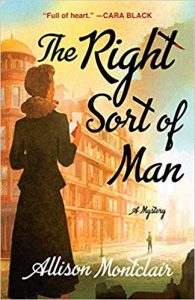 Over the course of the Sparks & Bainbridge series, beginning with The Right Sort of Man, Iris Sparks and Gwen Bainbridge have proven to have a very strange kind of luck. The sort of luck that has them tripping over murder victims – or in this case having a murder victim nearly drop on one of their heads. But that luck of theirs extends to not just finding the body – but also getting into the thick of the police investigation, involving themselves with the mob, AND, most importantly, figuring out whodunnit.
Over the course of the Sparks & Bainbridge series, beginning with The Right Sort of Man, Iris Sparks and Gwen Bainbridge have proven to have a very strange kind of luck. The sort of luck that has them tripping over murder victims – or in this case having a murder victim nearly drop on one of their heads. But that luck of theirs extends to not just finding the body – but also getting into the thick of the police investigation, involving themselves with the mob, AND, most importantly, figuring out whodunnit.
Up until this case, that luck has extended to emerging from each case with all of their friends, colleagues and hostages to fortune – as well as themselves – relatively unscathed at the end.
This case breaks the last bit of that streak, as the body that drops on Gwen’s head at the beginning leads to Iris’ mobster boyfriend near-death as the result of a gunshot in the middle. Center mass, in fact, but enough of a smidgeon of that luck kept that bullet from his heart. Not that recovery from a through-and-through shot to one lung is going to make his recovery a walk in the park – if he recovers.
Iris wants to murder whoever shot her man – but Gwen is there to keep her friend from going off half-cocked on a revenge spree. Leaving Gwen to do most of the investigation and surprisingly all of the derring-do in Sparks & Bainbridge’s very personal quest to figure out who murdered the body that dropped in the beginning AND who is doing their damndest to make sure that Archie Spelling is interred in a coffin beside him.
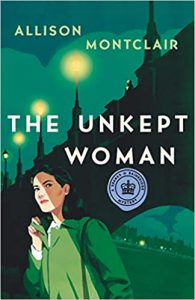 Escape Rating A+: I was up until 3 am finishing this, so an A+ it most definitely is. I tried telling myself I could finish AFTER breakfast, but myself wasn’t listening. I simply HAD to find out whodunnit!
Escape Rating A+: I was up until 3 am finishing this, so an A+ it most definitely is. I tried telling myself I could finish AFTER breakfast, but myself wasn’t listening. I simply HAD to find out whodunnit!
This entry in the series represents a turning point, as well as a bit of trading places. Up ’til now, Iris Sparks, former spy or whatever secret things she did during the war for whatever secret agency, was always the intrepid and daring partner, rushing in where angels rightfully feared to tread.
Gwen Bainbridge, on the other hand, was the cautious and conservative half, fearing – rightfully so – that if they cocked too much of a snook at the conventions that she would be made to pay for it in ways that have hung over her head like the Sword of Damocles in the previous books in the series.
Their positions reverse here, as Gwen is now out from under the restrictions of both her late husband’s family AND the Lunacy Court, while Iris is searching for approval – or at least understanding – from her disapproving mother and Archie’s extended family – only one of which is EVER likely to be on offer.
The police don’t want to listen to either of them – which is par for the course. Not only do the coppers not enjoy being shown up by a couple of amateurs, but Iris’ relationship with a mob boss and Gwen’s partnership with Iris, her friendship with Archie, and the friendly relations she has with Archie’s gang, tar both women with the brush of criminality.
Also, the police don’t seem to be all that interested in investigating Archie’s shooting. They don’t care much if one mobster rubs out another – they’re only worried about the potential for mob warfare that seems likely to follow.
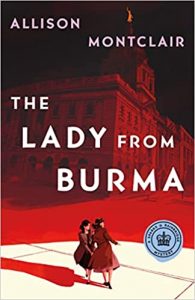 But the case itself isn’t so much about Archie as it is about Archie poking his nose in places that it doesn’t belong. It’s about the past – and not even Archie’s own. While Archie is fighting for his life in the hospital, and Iris Sparks is emotionally flailing about the potential loss of a future she wasn’t sure that she wanted until it was nearly snatched out of her hands – it’s up to Gwen Bainbridge to get to the bottom of the case that literally dropped on her head.
But the case itself isn’t so much about Archie as it is about Archie poking his nose in places that it doesn’t belong. It’s about the past – and not even Archie’s own. While Archie is fighting for his life in the hospital, and Iris Sparks is emotionally flailing about the potential loss of a future she wasn’t sure that she wanted until it was nearly snatched out of her hands – it’s up to Gwen Bainbridge to get to the bottom of the case that literally dropped on her head.
While the case does get wrapped, the story of Iris Sparks and Gwen Bainbridge and the Right Sort Marriage Bureau screeches to a halt with the pop of a champagne cork as 1947 is ushered in on a tide of desperate hope and wild expectation.
This reader, at least, desperately hopes that the next entry in the Sparks & Bainbridge will drop on her head this time next year. It’s not merely a matter of expectation – I absolutely HAVE to know what happens next.

 The Mummy of Mayfair (An Irregular Detective Mystery #2) by
The Mummy of Mayfair (An Irregular Detective Mystery #2) by 
 A Ruse of Shadows (Lady Sherlock, #8) by
A Ruse of Shadows (Lady Sherlock, #8) by 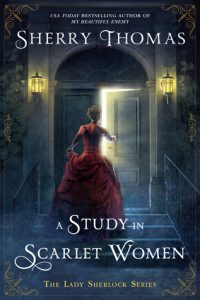 (This is a hint, by the way. Theoretically the books in this series could be read as standalone, but I wouldn’t recommend it. It’s not just that the endings of each book flow into the next, but that there’s a vast, interconnected and rather sticky web between all of the cases – at least so far. I’m glad I began at the beginning with A
(This is a hint, by the way. Theoretically the books in this series could be read as standalone, but I wouldn’t recommend it. It’s not just that the endings of each book flow into the next, but that there’s a vast, interconnected and rather sticky web between all of the cases – at least so far. I’m glad I began at the beginning with A Escape Rating B+: I have consistently found this series to be fascinating and frustrating in equal measure – and this entry in the series is no exception.
Escape Rating B+: I have consistently found this series to be fascinating and frustrating in equal measure – and this entry in the series is no exception. This story is also a bit of a mirror image to
This story is also a bit of a mirror image to  The Comfort of Ghosts (Maisie Dobbs, #18) by
The Comfort of Ghosts (Maisie Dobbs, #18) by 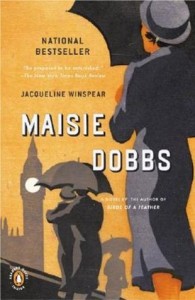 As seems fitting for this final book in the Maisie Dobbs series, A Comfort of Ghosts begins with an ending. One of the towering – literally as he was quite tall – secondary figures in this long-running series, Lord Julian Compton, originally Maisie’s employer, once-upon-a-time her father-in-law, later and last her friend, has died, Leaving Maisie to mourn, to comfort his widow, to be the executor of his estate and to clean up his last act in the late war.
As seems fitting for this final book in the Maisie Dobbs series, A Comfort of Ghosts begins with an ending. One of the towering – literally as he was quite tall – secondary figures in this long-running series, Lord Julian Compton, originally Maisie’s employer, once-upon-a-time her father-in-law, later and last her friend, has died, Leaving Maisie to mourn, to comfort his widow, to be the executor of his estate and to clean up his last act in the late war.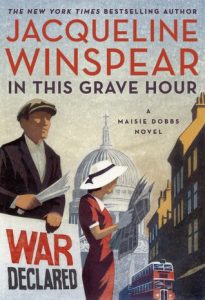 Escape Rating A-: This story closes all the circles that were opened back in the very first book in this series, the titular
Escape Rating A-: This story closes all the circles that were opened back in the very first book in this series, the titular  For those, like this reader, who have gotten to know Maisie over the years and books, this story is a bittersweet delight. It also feels right that Maisie leave the stage at this historical juncture, as the world she knew is not the world that is to come – as we know and as hints are shown in the story.
For those, like this reader, who have gotten to know Maisie over the years and books, this story is a bittersweet delight. It also feels right that Maisie leave the stage at this historical juncture, as the world she knew is not the world that is to come – as we know and as hints are shown in the story. Fatal Enquiry (Barker & Llewelyn, #6) by
Fatal Enquiry (Barker & Llewelyn, #6) by 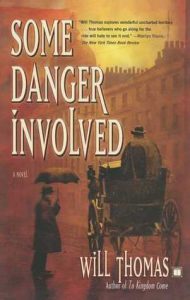 Most of the entries in the
Most of the entries in the  What makes the story rise to an A+, at least for this reader, was the delicious irony of the ending. Nightwine returns to London with deep, well-laid plans to eliminate Barker. Barker, forced to react rather than plan, still manages to maneuver Nightwine to what he believes will be his enemy’s downfall. It’s only after the results of that inevitable confrontation have been dealt with that Barker learns that both he and Nightwine have both been played by someone neither realized was even studying their board – let alone running it.
What makes the story rise to an A+, at least for this reader, was the delicious irony of the ending. Nightwine returns to London with deep, well-laid plans to eliminate Barker. Barker, forced to react rather than plan, still manages to maneuver Nightwine to what he believes will be his enemy’s downfall. It’s only after the results of that inevitable confrontation have been dealt with that Barker learns that both he and Nightwine have both been played by someone neither realized was even studying their board – let alone running it.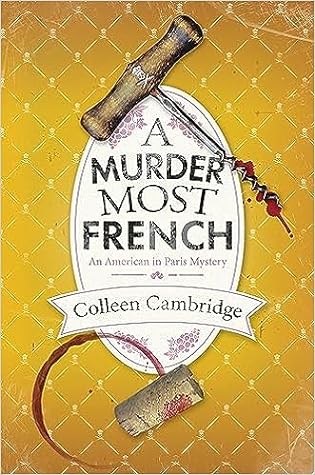 A Murder Most French (American In Paris Mystery, #2) by
A Murder Most French (American In Paris Mystery, #2) by 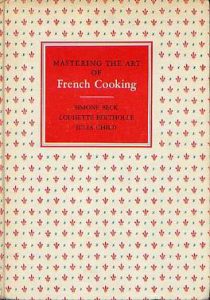 Julia Child is too busy learning French cooking, living her larger-than-life life in Paris AND at the beginning of writing her masterpiece,
Julia Child is too busy learning French cooking, living her larger-than-life life in Paris AND at the beginning of writing her masterpiece, 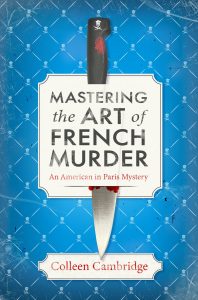 Escape Rating A+: If you loved the first book in this series – and who didn’t? – you will run, not walk to get this second book because it’s every bit as charming as the first. If you still need a bit of convincing, I’m going to get right to that.
Escape Rating A+: If you loved the first book in this series – and who didn’t? – you will run, not walk to get this second book because it’s every bit as charming as the first. If you still need a bit of convincing, I’m going to get right to that. The Murder of Mr. Ma (Dee & Lao, #1) by
The Murder of Mr. Ma (Dee & Lao, #1) by 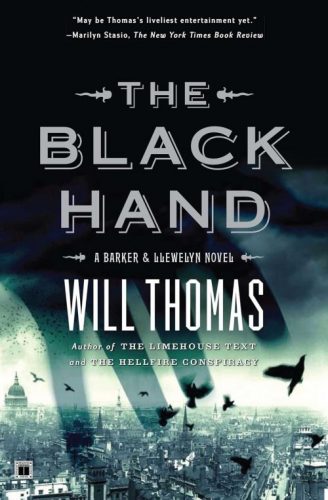 The Black Hand (Barker & Llewelyn, #5) by
The Black Hand (Barker & Llewelyn, #5) by 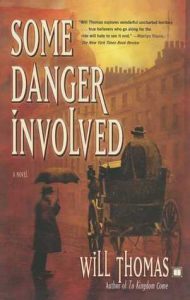 So far, at least, the
So far, at least, the 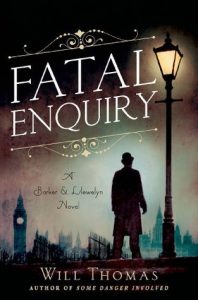 Last but not least there’s the resonance to the now in this story that is very much steeped in the ‘then’. Because while the case may be about the Mafia, what’s behind their advent into London is a debate about immigration and immigrants and just how easy or difficult it should be and just how much enforcement is necessary and which way and upon whom the economic impacts have and will fall.
Last but not least there’s the resonance to the now in this story that is very much steeped in the ‘then’. Because while the case may be about the Mafia, what’s behind their advent into London is a debate about immigration and immigrants and just how easy or difficult it should be and just how much enforcement is necessary and which way and upon whom the economic impacts have and will fall. Because I’ve enjoyed this series so much so far, it was an obvious choice for one of this week’s Blogo-Birthday giveaways – especially as the latest book in the series,
Because I’ve enjoyed this series so much so far, it was an obvious choice for one of this week’s Blogo-Birthday giveaways – especially as the latest book in the series, 
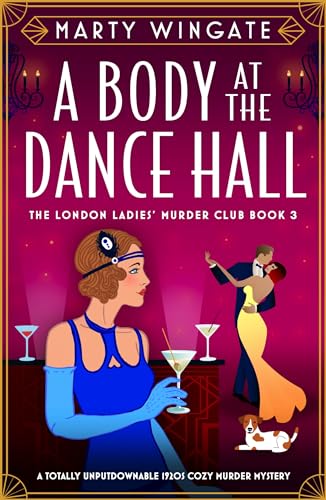 A Body at the Dance Hall (London Ladies' Murder Club #3) by
A Body at the Dance Hall (London Ladies' Murder Club #3) by  But trouble finds Mabel, as it has in her previous adventures,
But trouble finds Mabel, as it has in her previous adventures,  Escape Rating A-: I’ve already reached the point in Mabel’s adventures where I’m here specifically for her, and the particular case she’s working on is just extra. A compelling extra in the case of A Body at the Dance Hall, but still extra. I’m here to see how Mabel and her friends are doing, and to watch as she learns more about London, her assigned jobs for the Useful Women Agency, and the progress of her romance with her neighbor, Park Winstone. I’m especially here for the way that she keeps learning how to be a good investigator as well as an independent woman, a good worker and a good friend.
Escape Rating A-: I’ve already reached the point in Mabel’s adventures where I’m here specifically for her, and the particular case she’s working on is just extra. A compelling extra in the case of A Body at the Dance Hall, but still extra. I’m here to see how Mabel and her friends are doing, and to watch as she learns more about London, her assigned jobs for the Useful Women Agency, and the progress of her romance with her neighbor, Park Winstone. I’m especially here for the way that she keeps learning how to be a good investigator as well as an independent woman, a good worker and a good friend.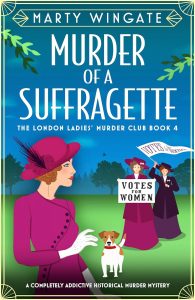 All of which means that in the middle of her assignment to show Roxanne the sights of London, Mabel also has a ringside seat on the behavior of Roxy, her father and stepmother, her mother when she arrives from America very much like the avatar of DOOM in T. Kingfisher’s
All of which means that in the middle of her assignment to show Roxanne the sights of London, Mabel also has a ringside seat on the behavior of Roxy, her father and stepmother, her mother when she arrives from America very much like the avatar of DOOM in T. Kingfisher’s 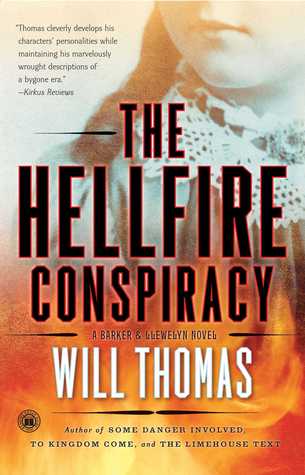 The Hellfire Conspiracy (Barker & Llewelyn, #4) by
The Hellfire Conspiracy (Barker & Llewelyn, #4) by 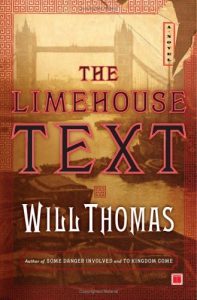 This fourth entry in the marvelously absorbing
This fourth entry in the marvelously absorbing 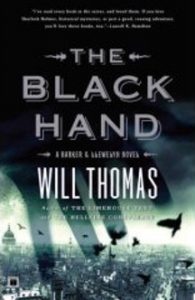 But it’s the characters of Cyrus Barker and Thomas Llewelyn themselves that keep the reader turning pages. Especially in a case like this one, where they go in knowing that the odds of a happy ending are very much against them, but determined to bring as much justice as can be had to all the victims of this atrocity; the living and the dead.
But it’s the characters of Cyrus Barker and Thomas Llewelyn themselves that keep the reader turning pages. Especially in a case like this one, where they go in knowing that the odds of a happy ending are very much against them, but determined to bring as much justice as can be had to all the victims of this atrocity; the living and the dead.